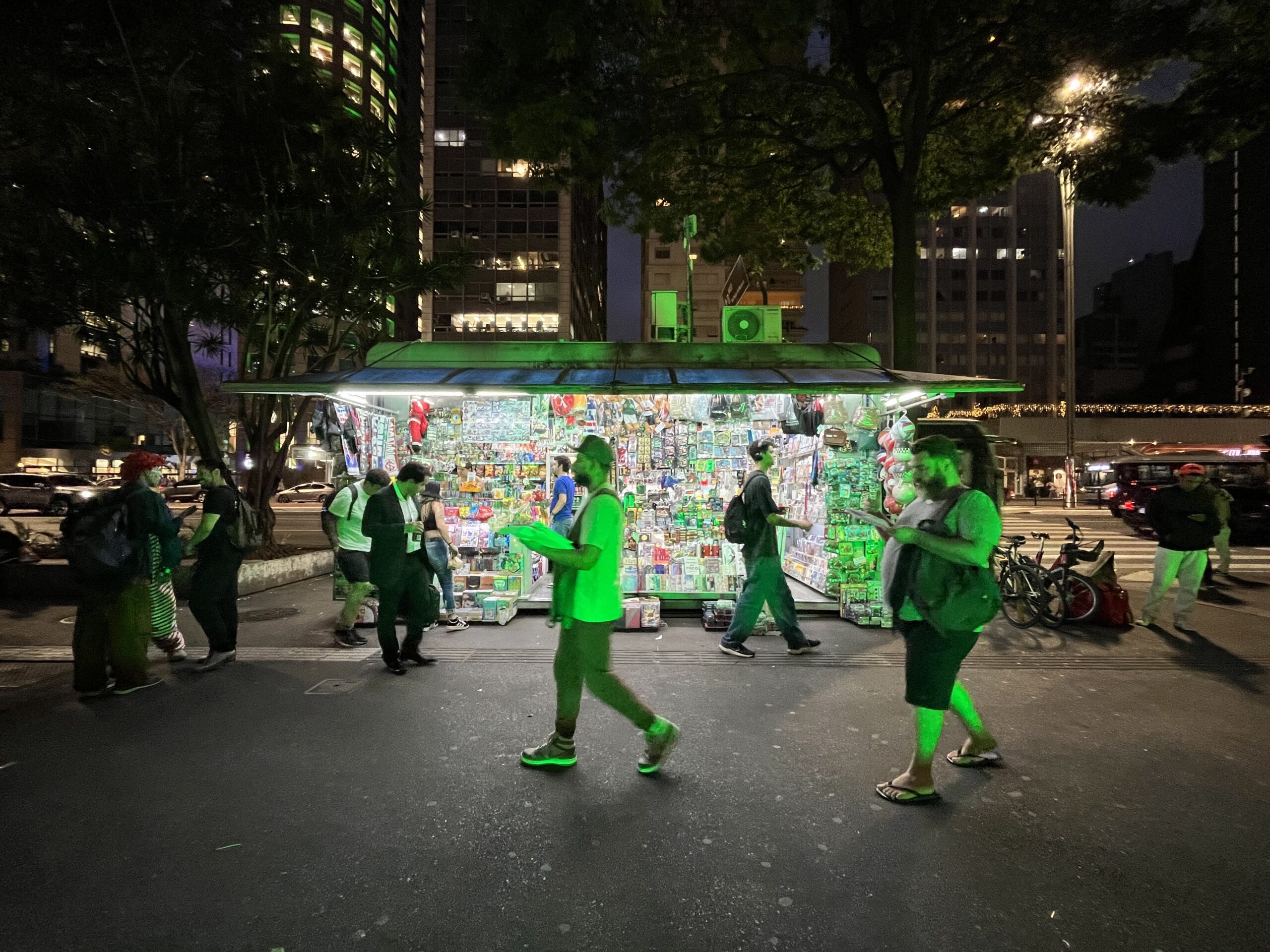
Learning to Read Sidewalks
Segregation and Spatial Identity in São Paulo – Rua da Mooca, Avenida Paulista, Rua Aspicuelta
Segregation und Raumidentiät in São Paulo – Rua da Mooca, Avenida Paulista, Rua Aspicuelta
Segregation and spatial identity in São Paulo are explored through three vibrant sidewalks: Rua da Mooca, Avenida Paulista, and Rua Aspicuelta. Street interviews, observations, and the analysis of spatial elements reveal the social dynamics of these places. The focus lies on perception, the researcher’s role, and documentary methods. Fine-grained analyses highlight the urban qualities of these pedestrian spaces.
Social segregation and spatial identity shape the urban public space in São Paulo, a complex urban structure that can only be comprehensively understood through detailed analysis at a small scale. This study systematically analyzes these phenomena based on three representative sidewalks: Rua da Mooca, Avenida Paulista, and Rua Aspicuelta. Qualitative methods such as street interviews, participant observations, and a detailed analysis of spatial elements provide in-depth insights into the social structures and interactions on site. Pedestrian behavior offers valuable information about the urban qualities and needs imposed on public spaces. The investigation emphasizes a fine-grained perspective to capture the dynamics and functions of sidewalks in detail. Furthermore, the researchers’ role, perception processes, and documentary methods are methodically reflected upon. The study aims to reveal the specific qualities of the sidewalks through fine-scale analyses and to generate a deeper understanding of the complex spatial and social processes within the metropolis.
Segregation und Raumidentität in São Paulo werden an drei lebendigen Gehwegen erforscht: Rua da Mooca, Avenida Paulista und Rua Aspicuelta. Durch Straßeninterviews, Beobachtungen und die Analyse von Raumelementen zeigt sich die soziale Dynamik vor Ort. Im Mittelpunkt stehen Wahrnehmung, Forscherrolle und dokumentarische Methoden. Kleinmaßstäbliche Analysen machen die urbanen Qualitäten der Gehwege erlebbar.
Soziale Segregation und räumliche Identität prägen den urbanen öffentlichen Raum in São Paulo. Anhand der drei repräsentativen Gehwege Rua da Mooca, Avenida Paulista und Rua Aspicuelta werden die Phänomene umfassend untersucht. Qualitative Erhebungen, darunter Straßeninterviews, teilnehmende Beobachtungen und eine detaillierte Analyse der raumgestaltenden Elemente, ermöglichen Einblicke in die vielschichtigen sozialen Strukturen und Interaktionen an den ausgewählten Orten. Die Frage der Maßstäblichkeit wird thematisiert, indem die Metropole im kleinen Maßstab betrachtet wird, um Bürgersteige und das Verhalten der Menschen vor Ort genau zu erfassen. Besonderes Augenmerk gilt der Einbindung der Forschenden, der Wahrnehmung der Umgebung und der dokumentarischen Erfassung des Stadtraums. Ziel ist es, durch feinräumliche Untersuchungen die spezifischen städtischen Qualitäten der Gehwege herauszuarbeiten und so ein vertieftes Verständnis für die komplexen räumlichen und sozialen Prozesse in der Metropole zu schaffen.
Access the full article [in English] here: